“When Dallas health care worker Nina Pham became infected with Ebola earlier this month, city officials vowed to keep her beloved dog, Bentley, safe under quarantine as a precaution in case he contracted the virus too. But now that both have been given a clean bill of health, their long and challenging period of separation will come to a happy close.”
Page 4 of 11
I chose to write this post about the package for some honey I found in the kitchen of my suite. This stuck out to me as a good product to use for this post because, unlike many other uses of animals on food labels, bears are not used for production of honey.
The bears that are used in this product’s packaging are on opposite ends of the anthropomorphism spectrum: the bottle bear is so abstract that it displays very few human qualities, while the bear on the label has a very human-like expression and looks directly at the consumer. Although they are not as anthropomorphized as some other examples of food mascots, the way they are depicted is still very telling about how they are seen by the company that designed the packaging.
While the first bear, the bottle bear, does not exhibit particularly human traits, it has also been stripped of many of the things that make it a bear. The animal this bottle is shaped like has been stripped of its bear-ness, conveniently leaving a hollow shell to hold honey.
Meanwhile, the bear printed on the label is peeking over the brown region of the label in the way a human might, and looks directly at the viewer with a smile, something human added to the bear for the sake of advertisement. This anthropomorphized bear’s image is being exploited by humans for the sake of advertisement.
Foer defines anthropomorphism as, “the urge to project human experience onto the other animals” (Foer 46). This “urge” is exploited by the advertisers to allow consumers to make a connection the bear on the package, as bears are commonly associated with eating honey. By anthropomorphizing the bear on the label, people are encouraged to partake in the same activities as the bear, i.e. eating honey. The bottle bear contributes to this attempt at influence through anthropomorphization, as he is literally full of honey, just as the consumer should be.
The package for this honey shows how anthropomorphized animals’ images are exploited by food companies to further the industry’s own goals. In this case, that goal is selling honey. Foer’s definition of anthropomorphism as an “urge” plays right into this use of animals. or more accurately their images, in the food industry as instruments of marketing departments and tools of the giant food producers of the world.
House Bill 1750 has been in the news lately. Supported by 75% of PA residents, the bil banned live pigeon shoots and other animal cruelty offenses including eating cats and dogs. According to most reports, the NRA lobby killed the bill (by blocking the vote) because, according to them, “These types of activities have been held in the Keystone State for more than a century, and participants are law-abiding, ethical shooting enthusiasts, hunters and sportsmen. ”
Sources for this post
http://www.mcall.com/opinion/white/mc-bw-pennsylvania-pigeon-shoot-20141018-column.html
I attended a Marvelstone lecture by Garrett Fagan called “Watching the Fighters: Exploring the Roman Fascination with Gladiatorial Combat.” Some of the things that he mentioned related to this class such as the wild beast spectacles that Romans performed and enjoyed. I asked Dr. Fagan about how the ancient Romans treated the animals that they used for wild beast spectacles and said that they were mistreated. Many carnivores were starved because hungry animals are more likely to attack. Since it is not in most animals’ nature to attack human beings, they were often whipped to coax them into attacking.
In his talk, Dr. Fagan mentioned that the wild beast spectacles that occurred in Rome are not that different from modern-day bull-fighting in Spanish-American countries and the dog fights that occur in some countries today. He also mentioned that psychologically, people must consider something righteous and justified in order to enjoy it. This is why it is important to analyze and gain awareness about the things that we find pleasure in. I think this is especially applicable to eating animals. For example, in “Am I Blue?” by Alice Walker, she puts down her chicken after gaining awareness and changing her mind about the righteousness of eating meat. The reason Roman gladiators found killing these wild beasts justified because they thought of them as predators who could potentially hurt humans. They also killed some herbivores and they justified this by claiming that these animals were a threat to Roman farmers’ crops.
Dr. Fagan also stated that violence only occurs when confrontational tension/fear (CTF) is overcome. Unfortunately, people often overcome CTF by victimizing the weak. The reason that we victimize animals may be due to the fact that they cannot speak up for themselves and thus it is easy to take advantage of them.
Another interesting fact that I discovered while researching Roman gladiators is that despite how violent they were to other living beings, they were actually recently discovered to be vegetarians!
Overall, Dr. Fagan’s talk has helped me continue to think about why our society is collectively violent against animals.
References:
Fagan, Garrett. “Watching the Fighters: Exploring the Roman Fascination with Gladiatorial Combat.” Lafayette College. Kirby Hall of Civil Rights, Easton, PA. 24 Oct. 2014. Guest Lecture.
Howard, Jacqueline. “Ancient Bones Show Roman Gladiators Ate Vegetarian Diet, Drank A Weird Tonic.” The Huffington Post. TheHuffingtonPost.com, 22 Oct. 2014. Web. 24 Oct. 2014.
Walker, Alice. “Am I Blue?” Other Nations: Animals in Modern Literature. By Tom Regan and Andrew Linzey. Waco, TX: Baylor UP, 2010. 182-87. Print.
My family subscribes to Time magazine and I noticed that the most recent Time article’s front page story “How to Eat Now” is relevant to what we have discussed in class. Although this article does not discuss the healthfulness of eating animals versus eating vegetarian food, it mentions that home-cooked meals are much more healthy than food that is pre-cooked, processed, or ordered at restaurants. The article notes that the more connected we are to the origins of the food we eat, the better it is for our health. I think Foer would agree with this article, especially when it stated that:
“We have allowed others to feed us, rather than taking charge of feeding ourselves. For the sake of our health, our well-being, our palates and the environment, that has to change” (52).
By feeding ourselves, we are becoming more connected with the food we eat and in control of what we put into our bodies. The more aware we are of what we eat, the healthier we will be.
References:
Bittman, Mark. “How to Eat Now.” Time 20 Oct. 2014: 48-54. Print.
Echoing the kind of reasoning we’ve seen in Eating Animals, Bill Maher, in an Op Ed for the NYT, asks:
WOULD you cram a dog into a crate for her entire life, never letting her out, until you took her to the pound to kill her?
Of course you wouldn’t, and yet that’s effectively what happens to most mother pigs in this country. They spend their lives in what are called gestation crates, tiny stalls that house pregnant sows. They cannot even turn around, and are immobilized in these crates until they are taken to the slaughterhouse.
When I was younger my favorite place was the aquarium at the boardwalk near me. I had my birthday there every year until I was 8 because I loved the animals. In particular, my favorite was a seal, named Lucille, who had been blinded in an accident with a boat and had been rescued. She was trained to do tricks, which according to the aquarium staff, were rehabilitation exercises. She was my favorite.
This image of the seal reminds me of Lucille and her tricks. It is taken from a Sea World seal show and depicts a seal balancing on its flippers while balancing a soccer ball on its nose. The seals are trained by rewarding them with food after they preform a task correctly. While it appears that the seal enjoys doing the tricks, after reading Berger’s essay I look at this differently because as humans, how do we know that the seal is experiencing pleasure in performing. This isn’t a behavior that they exhibit in the wild so are we forcing the seal to learn tricks solely for our amusement, or is there an advantage to these zoo shows.
I think this example is what Berger refers to as “humans viewing animals as toys for our amusement”. After reading Berger’s essay, I can understand his opinion on animals in captivity, especially as they grew in popularity with children, animals have almost become like toys, instead of just our companions. It is very common to teach domesticated pets, like dogs, obedient behavior and while it does not seem to bother a domesticated animal, is it fair to train wild animals to do tricks as well in zoo performances?
On page 23, Berger states, “A zoo is a place where as many species and varieties of animal as possible are collected in order that they can be seen, observed, studied.” He is stating here that we are viewing animals as things that we can collect and categorize and analyze as though they weren’t living, creatures. He goes on to discuss how captivity makes it possible for humans to view animals like they would view art in a gallery. I think this is a fair statement however, I disagree with his generalization that zoos are not useful. While I agree that zoos aren’t always the best solution and agree that they really can emphasize human control over animals, I think they help us learn and understand animals we can’t normally interact with. Because humans are able to get up close and interact with animals (like tigers, elephants, polar bears etc.) safely, we are able to make relationships with animals that, if we never got to develop this relationship with them, we wouldn’t appreciate them and would see them as vicious and dangerous to us.
I think zoos have allowed us to better understand animals and save some species from extinction by keeping them in captivity. While it’s not always a wonderful solution it has really helped bring about preservation movements and I believe that they can be critical in preserving our environment. Because we are now able to develop companionship with animals that we never would have before, humans begin to care about what happens to polar bears for example because we can safely look one in the eyes and understand why we should save such a beautiful creature. I don’t however, think that there is a necessity for animal shows. By forcing them to preform tricks and behaviors they would never do in the wild, we are purely using them for entertainment. While we don’t think that these tricks harm the animals, how can we be sure that the animals are finding enjoyment out of this? I think that zoos can be very beneficial to the preservation of the environment, but, after reading Berger’s essay, I believe that the tricks and shows are purely an instance of us using the animals as our toys.
Today I attended a talk that was related to the bird exhibition currently being held at Williams Art Center that commemorates the hundredth anniversary of the death of Martha, the last passenger pigeon. This talk was given by two Lafayette Biology professors, Dr. Butler and Dr. Rothenberger. In this post, I would like to tell those of you who missed the talk about what I learned from it and how it connects to what we are learning in class.
I would like to pose a question to you: How many times have you walked into a sliding door? The answer is probably several times, even though you are a human being with a knowledge of doors and windows. One can only imagine how many times birds, who lack this knowledge, crash into sliding doors and windows. Since birds are flying so quickly, many of their crashes are fatal. Windows are the primary cause of bird mortality. Between 100 million and 1 billion birds die from collisions with windows each year. However, the Lafayette Department of Biology is currently working with the Department of Civil Engineering and EREN (Educational Research and Educational Network) on developing ways to lower the number of bird mortalities at Lafayette. You can help them with this by emailing Dr. Mike Butler with a picture/location each time you find a dead bird on campus.
The interesting thing to take away from this is that windows, although a human invention, are not a consequence of the Industrial Revolution. This talk was different from the lecture previously given by Michael Pestel because it contrasted Berger’s idea that our disconnection from animals and consequent reduction of them is a product of the Industrial Revolution. According to Dr. Rothenberger, overexploitation of animals by humans occurred well before the Industrial Revolution. For example, the Steller’s Sea Cow was hunted to extinction in 1768, a mere twenty-seven years after the discovery of the species. Another example are the Moa birds which were hunted to extinction in 1400.
Although clearly humans have diminished the welfare of animals and caused mass extinctions, none of the books that we have read in class seem to consider the possibility of reversing our past mistakes. Dr. Rothenberger discussed the possibility of resurrection of extinct species via three methods: backbreeding, cloning, and synthesis. Backbreeding is a form of artificial selction to achieve an animal breed that resembles an extinct species, cloning is creating a viable embryo from a body cell and an egg cell, and synthesis involves using fragments of the DNA of certain extrinct species to synthesize the genes for certain traits and then splice those genes with the genes of a related species. However, the ethics of these processes are highly controversial and some experts question whether it will be practical. For me, the idea of resurrection just raises further unanswerable questions such as: How will we reintroduce these species to the environment? How will they interact with present species? Who will take care of them to prevent their re-extinction? Since these questions do not seem to have practical answers, my conclusion from this talk is that it will be very inefficient to try to resurrect an extinct species and resurrection may end up causing more problems than it solves.
For those of you interested in learning more about this topic, there will be another talk called the “Ethics of De-extinction” at 7 PM on 10/27 in Oechle 224! I am going and I hope to see you there.
References:
Berger, John. “Why Look at Animals?” About Looking. New York: Pantheon, 1980. 3-28. Print.
“Bird Window Collisions – Tips on How To Prevent Wild Birds From Crashing Into Your Windows.” Birdwatching-Bliss.com. N.p., n.d. Web. 16 Oct. 2014.
Butler, Mike and Megan Rothenberger. “The Loss and Resurrection of Species.” Lafayette College. Williams Arts Center, Easton, PA. 16 Oct. 2014. Lecture.
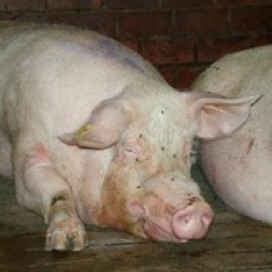
This is a picture of an infected pig. I certainly would not feel comfortable eating that! Yet that is what someone may unknowingly eat since humans are so separated from the origins of their meat.
This article was really scary because it states that Ebola can be transmitted from pigs to primates. We have discussed in class how similar pigs are to human beings in terms of intelligence but they also are very similar to humans in terms of anatomy. This is why some Biology and Anatomy classes use fetal pig dissections as part of their curriculum. Knowledge of this makes me worried that it is possible to contract many illnesses from the pork that we eat. According to this article, “‘Pigs are remarkably versatile animals when it comes to acquiring and transmitting infections,’ said Tara Smith from the University of Iowa, who studies emerging infectious diseases and was not involved in this study. ‘They have been implicated in the spread of a variety of nasty zoonotic viruses: influenzas, Nipah virus, possibly Hendra virus, and now at least two types of Ebola.'”
A lot of the antibiotic and drug treatments that we force our meat to undergo may reduce the healthiness of humans. I have been thinking about this a lot since Foer warned that we are overdue for another pandemic.
References:
“Ebola from Pigs to Monkeys.” The Scientist. N.p., n.d. Web. 14 Oct. 2014.
Foer, Jonathan Safran. Eating Animals. New York: Little, Brown, 2009. Print.
“Philippine Pig Worker Infected with Ebola.” PigProgress. N.p., n.d. Web. 14 Oct. 2014.
https://www.youtube.com/watch?v=khoaA3rVNI0
Mike Rowe in this short 2:50 minute video clip discusses how we view pain and suffering in animals, in this case sheep. The video isn’t necessarily saying experts are wrong, but rather when personal experience and personalized human knowledge can contribute to how we understand animals and our sometimes projected emotions of pain and suffering. It’s worth watching to understand the disparity between conventional knowledge and personalized experience.
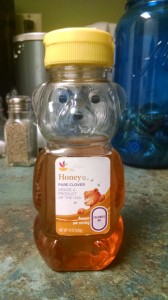
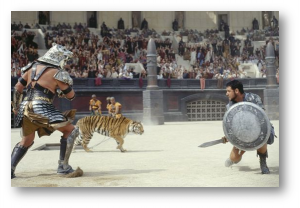
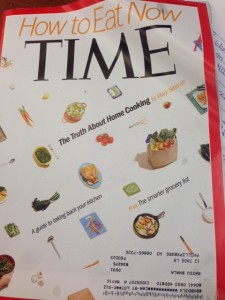
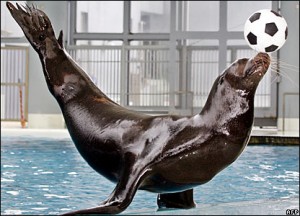
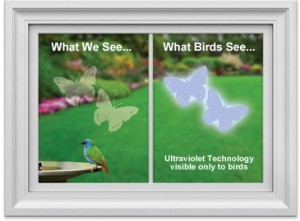
Recent Comments